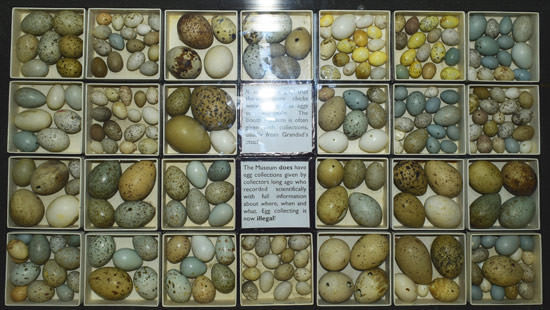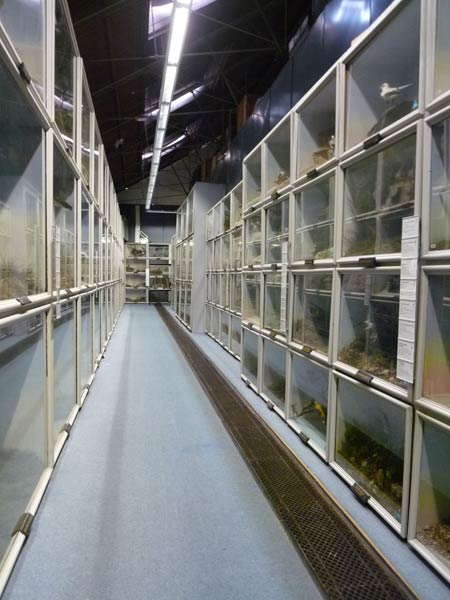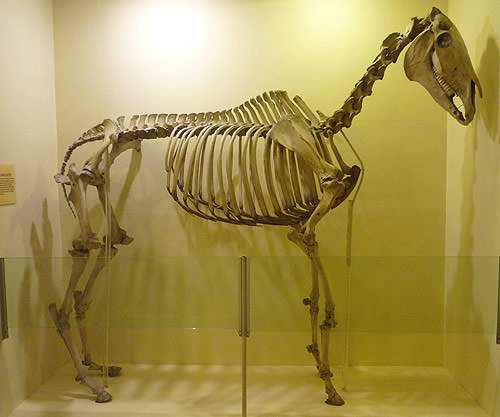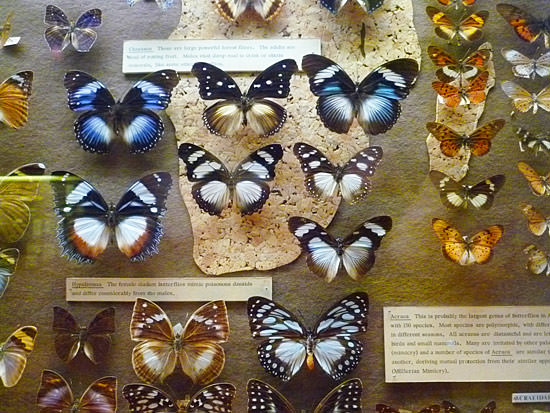There’s a building in the northern suburbs (banlieue) of Brighton and Hove that looks quite uninteresting. You could almost pass it without noticing it. Yet inside it is a veritable treasure trove (un trésor) of natural history collected in the Victorian age (l’ère victorienne). Admission to this time-capsule is free.

Edward Thomas Booth
Edward Booth, who was born in 1840, was instructed in the art of taxidermy (l’empaillage) before he came to Brighton as a 14 year-old. His family had enough money for him not to have to work and so he devoted himself to his twin passions of natural history and hunting (la chasse). Gradually this turned into a plan: to shoot every species (espèce) of British bird, with examples of egg, young bird, male and female adult of each species - and then to stuff (bourrer) the birds and exhibit them in a museum. He became the epitome of the English Victorian collector.

Collecting, of course, begins with killing. Birds’ eggs were ‘blown’ or emptied of their unborn, or birds were shot. Mr Booth was an expert at this, even designing his own guns. Lacking binoculars (jumelles) or powerful cameras, seeing birds and animals close-up meant killing them. The museum is also crammed with the skeletons (squelettes), pelts (la peau / la fourrure) or trophy skulls (crânes trophée) of various animals.

These days this is considered unethical. Collecting birds eggs is illegal today - and so it should be. We need to remember that the Booth collection was made when this sort of activity was neither illegal nor frowned upon (désapprouver) socially. What we see in the museum today are the vestiges of a morality long-gone. As if to emphasise this, the museum displays information about various extinct species. In January 2014, they even added the skeleton of a dodo, a bird that became extinct 350 years ago.

The Museum
Booth’s collection of birds, eggs and fossils soon outgrew his own house and in 1874 he built a museum in his garden. On his death in 1890, the collection passed to the city. He stipulated that the collection of environmental dioramas should not be altered and this wish has been respected ever since.
Booth was not just a collector. He also kept detailed diaries about the species that he collected, noting behaviour and habitat. As a serious ornithologist, his contribution has added to our understanding of the environment. The Museum now serves to raise awareness of the natural world.
The bird dioramas
A diorama is a three-dimensional scale-model likeness. In this case, each species of bird is presented in a glass-fronted case (vitrine) as a group of birds in their typical habitat, such as a stream (ruisseau), a beach (plage), a cliff ledge (corniche), a hedgerow (haie) or moorland (lande), etc.

The museum contains about 300 of these dioramas in two long corridors with these diorama cases on either side.

These form one of the largest collections of stuffed birds in Britain.


The museum also displays some of its fossil and bone collections. Below is the skeleton of a horse, not something one sees that often!

The butterfly displays
The museum also has a display of over 650 types of butterfly (***).



Although the museum is first and foremost a series of collections from a bye-gone age (une époque passée), it also plays a vital part in the public understanding of local habitats. This page on their website explains this in detail.
Links
The Brighton Museums website.
The Booth Museum on Wikipedia.
Argus newspaper article on the dodo skeleton, February 2014.
Photo credits
The first photograph on this page has been kindly provided by the Press and PR Department of the Royal Pavilion & Museums, Brighton & Hove, http://brightonmuseums.org.uk.
